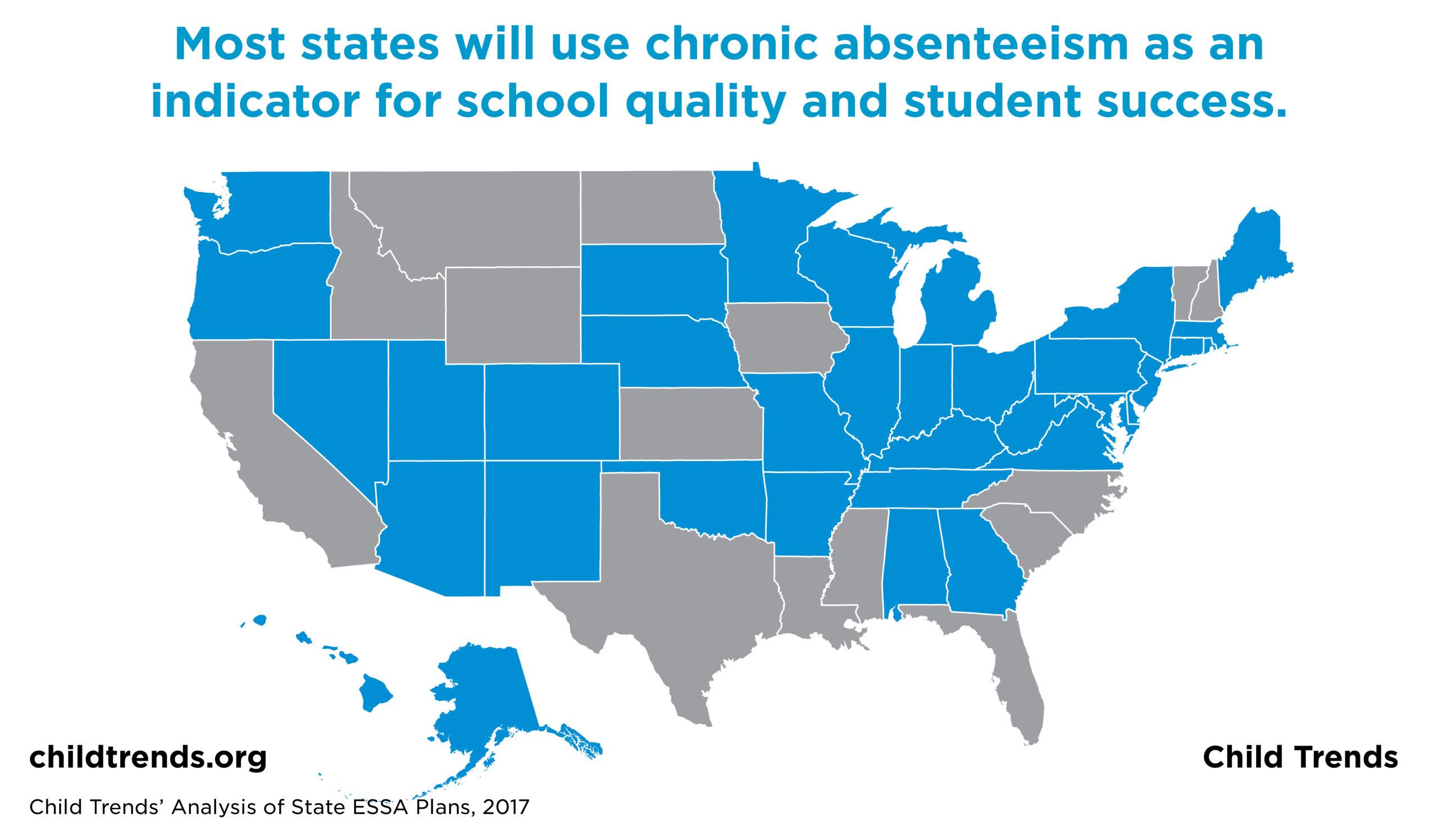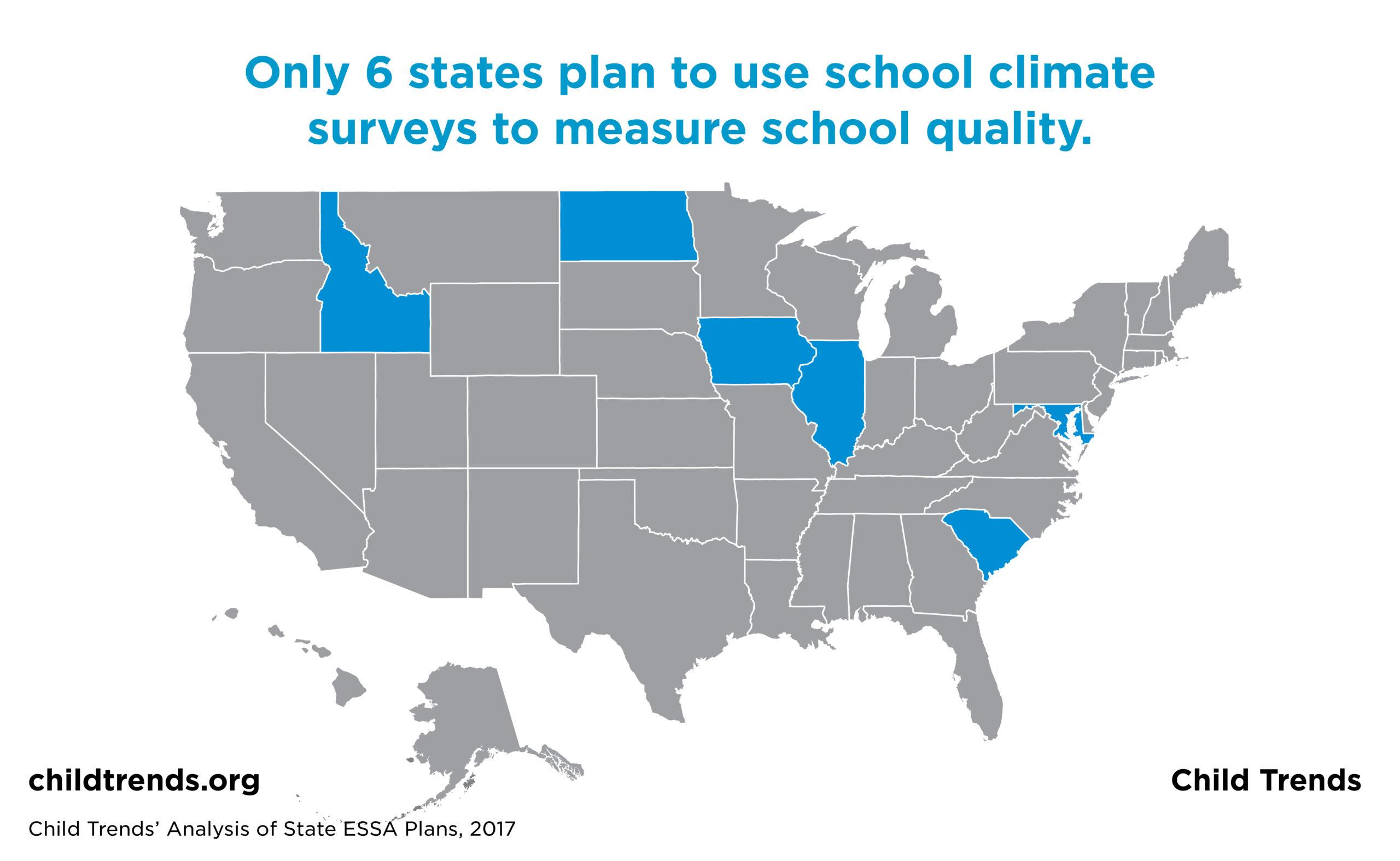Some states are missing the point of ESSA’s fifth indicator
The week of September 18 marked the final deadline for state education departments to submit their plans for implementation of the Every Student Succeeds Act (ESSA) to the U.S. Department of Education. As part of these plans, states had to detail how they would address ESSA’s requirement to include an indicator of “School Quality or Student Success” as part of their school accountability systems (“fifth indicator”). In requiring states to designate this indicator alongside metrics of student performance (i.e., academic achievement, an additional academic indicator, graduation rates, and English language proficiency), Congress recognized the need for schools to improve the conditions in which children learn. Including measures of healthy school environments—both single indicators like chronic absenteeism and broader metrics such as school climate—helps ensure that schools focus on providing all students with the supports they need.
Child Trends conducted an initial scan of states’ proposed accountability systems to examine how each approached the fifth indicator. Although the vast majority of states selected at least one indicator—usually chronic absenteeism—to gauge how schools support students in areas beyond academic performance, a handful missed a critical opportunity to emphasize the importance of supporting children’s healthy development. Florida, Kansas, Louisiana, Mississippi, New Hampshire, North Carolina, Texas, Utah, and Wyoming opted to focus on additional academic indicators, such as growth among the lowest-performing students, science and social studies achievement, and AP/IB participation. While these measures are certainly laudable, the exclusion of indicators of student well-being sends a disturbing message to schools in these nine states.

Why is the omission so noteworthy? As the old adage goes, “What gets measured, gets done.” It is well-established that students’ academic achievement suffers when they do not feel safe in school, are not engaged in sufficient physical activity, or lack adequate support around their chronic health conditions. Conversely, outcomes improve when schools focus on teaching students social and emotional skills, improving school climate, and providing healthy nutrition. By holding schools accountable—not only for academic achievement but also for these underlying drivers—we help ensure that all students have an opportunity to succeed in school.
While the remainder of states generally heard this call, there is still room for improvement. Our analysis of posted state plans revealed that 34 states and the District of Columbia plan to use chronic absenteeism—or the percentage of students who miss a significant amount of school (typically more than 10% of total school days)—as at least part of their fifth measure. Chronic absenteeism is reflective of nearly every element of a healthy school environment: physical health, mental health, school climate, and community support all play a role.


However, while chronic absenteeism will certainly bolster educators’ understanding of the underlying issues that influence academic achievement, this metric alone cannot help a school detect the specific challenges in need of attention. Just as states are considering the use of interim or formative assessments to identify individual students’ needs during the school year, so too should they consider tools and measures to continually assess the health of the school environment. However, only six states opted to include a school climate survey as part of their fifth indicator. A handful of others plan to consider adding school climate surveys in the future, or to otherwise incentivize their use. (Nevada provides a “2% bonus” to schools’ scores if a school reaches a participation benchmark for the survey, but does not include the results as part of the accountability metric.)
Although states have already submitted their plans to the Department of Education, they can revise these plans as they begin implementation. Adding additional measures of healthy school environments will go a long way toward ensuring that students thrive in schools.
© Copyright 2024 ChildTrendsPrivacy Statement
Newsletter SignupLinkedInThreadsYouTube